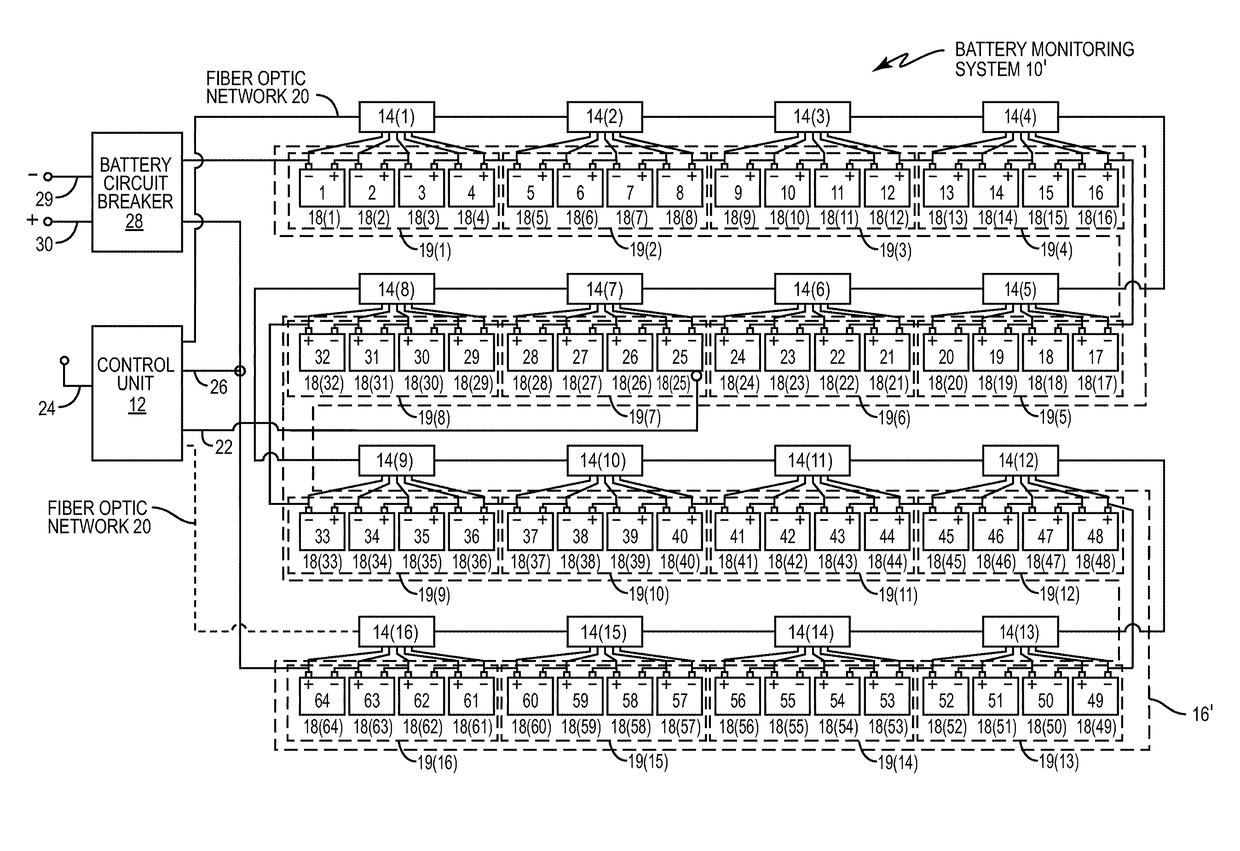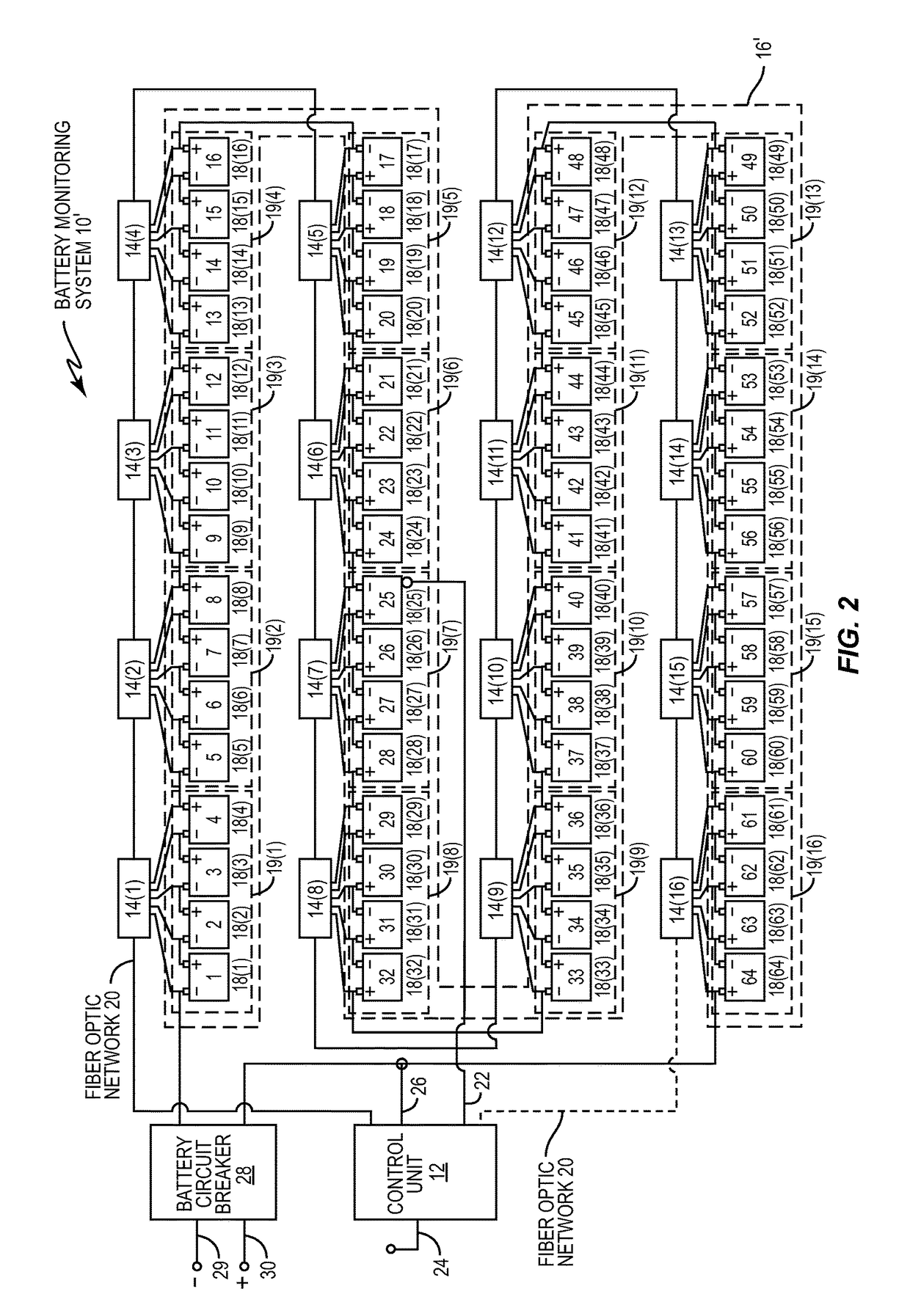Non-sequential monitoring of battery cells in battery monitoring systems, and related components, systems, and methods
a battery monitoring and non-sequential monitoring technology, applied in emergency protective arrangements, emergency power supply arrangements, instruments, etc., can solve the problems of acid batteries losing the ability to accept a charge, containing one or more failed battery cells being unable to power the industrial system, and each battery cell eventually failing
- Summary
- Abstract
- Description
- Claims
- Application Information
AI Technical Summary
Benefits of technology
Problems solved by technology
Method used
Image
Examples
Embodiment Construction
[0021]With reference now to the drawing figures, several exemplary embodiments of the present disclosure are described. The word “exemplary” is used herein to mean “serving as an example, instance, or illustration.” Any embodiment described herein as “exemplary” is not necessarily to be construed as preferred or advantageous over other embodiments.
[0022]Embodiments disclosed in the detailed description include non-sequential monitoring of battery cells in battery monitoring systems, and related components, systems, and methods. In this regard in one embodiment, a battery monitoring system control unit is provided. The battery monitoring system control unit is configured to control battery monitoring devices. Each battery monitoring device is configured to be coupled to a subset of battery cells electrically connected in series in a sequential order to form a battery. The battery monitoring system control unit is further configured to instruct the battery monitoring devices to test a...
PUM
 Login to View More
Login to View More Abstract
Description
Claims
Application Information
 Login to View More
Login to View More - R&D
- Intellectual Property
- Life Sciences
- Materials
- Tech Scout
- Unparalleled Data Quality
- Higher Quality Content
- 60% Fewer Hallucinations
Browse by: Latest US Patents, China's latest patents, Technical Efficacy Thesaurus, Application Domain, Technology Topic, Popular Technical Reports.
© 2025 PatSnap. All rights reserved.Legal|Privacy policy|Modern Slavery Act Transparency Statement|Sitemap|About US| Contact US: help@patsnap.com



